Nutrition For Healthy Living 5Th By Wendy Schiff – Test Bank
Chapter 05 Test Bank: Carbohydrates
Risk Factors for Chronic Disease
1. According to Shawn’s physician, Shawn has a high risk of _____ because his waist circumference is 42 inches, his blood pressure consistently measures 140 mm Hg/90 mm Hg, and his fasting blood glucose level is 110 mg/dl.A. cystic fibrosis. metabolic syndromeC. diverticulitisD. constipationAccessibility: Keyboard NavigationBloom’s Level: 3. ApplyLearning Outcome: 05.07.07 Identify the primary signs of metabolic syndrome, the impact the condition has on health, and how one can reduce the risk of developing the syndrome.Section: 5.07Topic: CarbohydratesTopic: MetabolismSigns of Metabolic Syndrome
2. Which of the following physical characteristics or health conditions is a sign of metabolic syndrome?A. Frequent urinationB. Waist circumference of 43 inchesC. Unexpected weight lossD. Body temperature that is over 101°FAccessibility: Keyboard NavigationBloom’s Level: 1. RememberLearning Outcome: 05.07.07 Identify the primary signs of metabolic syndrome, the impact the condition has on health, and how one can reduce the risk of developing the syndrome.Section: 5.07Topic: CarbohydratesTopic: MetabolismDiagnosing Metabolic Syndrome
3. Which of the following physical characteristics or health conditions is a sign of metabolic syndrome?A. Waist circumference that measures 33 inchesB. Body temperature that is over 101°FC. Stomach ulcers that bleedD. Blood pressure that is consistently higher than normalAccessibility: Keyboard NavigationBloom’s Level: 1. RememberLearning Outcome: 05.07.07 Identify the primary signs of metabolic syndrome, the impact the condition has on health, and how one can reduce the risk of developing the syndrome.Section: 5.07Topic: CarbohydratesTopic: MetabolismMetabolic Syndrome
4. Which of the following physical characteristics or health conditions is a sign of metabolic syndrome?A. Body temperature that is over 101°FB. Fasting blood triglyceride levels that are consistently more than 150 mg/dlC. Fasting blood glucose levels that are consistently between 75 and 99 mg/dlD. Waist circumference that is 32 inchesAccessibility: Keyboard NavigationBloom’s Level: 3. ApplyLearning Outcome: 05.07.07 Identify the primary signs of metabolic syndrome, the impact the condition has on health, and how one can reduce the risk of developing the syndrome.Section: 5.07Topic: CarbohydratesTopic: MetabolismDiet and Health
5. Five-year-old Tailia develops abdominal cramps and diarrhea a few hours after she eats sugary foods. Based on this information, Tailia probably hasA. lactose intolerance.B. sucrase deficiency.C. hypoglycemia.D. diabetes.Accessibility: Keyboard NavigationBloom’s Level: 5. EvaluateLearning Outcome: 05.02.02 Identify the basic monosaccharide components of sucrose, maltose, and lactose.Learning Outcome: 05.04.01 Describe the major steps involved in digesting and absorbing starches and sugars.Learning Outcome: 05.07.01 Discuss the effects of excess carbohydrate consumption on health.Learning Outcome: 05.07.03 List at least three signs or symptoms of diabetes.Learning Outcome: 05.07.06 Compare hyperglycemia with hypoglycemia.Learning Outcome: 05.07.08 Explain the difference between lactose intolerance and milk allergy.Section: 5.02Section: 5.04Section: 5.07Topic: CarbohydratesTopic: Digestion, absorption, and transportTopic: Digestive disordersTopic: Food allergies and intolerancesSpecial Diet
6. After Cameron consumes foods and beverages that contain fructose, he develops abdominal bloating, cramps, and gas that is followed by diarrhea. A _____ diet is likely to help him avoid these intestinal signs and symptoms.A. low-FODMAPB. high-fiberC. low-sodiumD. high-GI/high-GLAccessibility: Keyboard NavigationActivity Type: NewBloom’s Level: 3. ApplyLearning Outcome: 05.05.01 Identify the major sources of added sugars in American diets.Learning Outcome: 05.07.01 Discuss the effects of excess carbohydrate consumption on health.Learning Outcome: 05.08.01 Explain the difference between the glycemic index and glycemic load.Section: 5.05Section: 5.07Section: 5.08Topic: Digestion, absorption, and transportTopic: Digestive disordersTopic: Simple carbohydratesHypoglycemia
7. Bill has type 1 diabetes. What step can he take to reduce the likelihood that he develops hypoglycemia?A. Take a daily dietary supplement that provides a variety of B vitaminsB. Eat one large meal per day, in the morning, if possible.C. Give himself insulin injections whenever he feels hungryD. Eat meals and snacks that contain carbohydrate on a regular basisAccessibility: Keyboard NavigationBloom’s Level: 2. UnderstandLearning Outcome: 05.07.06 Compare hyperglycemia with hypoglycemia.Section: 5.07Topic: Blood glucose regulationTopic: MetabolismTreating Hypoglycemia
8. A person who experiences hypoglycemia should avoid eating foods that contain carbohydrates for at least 3 hours.FALSE
Accessibility: Keyboard NavigationActivity Type: NewBloom’s Level: 2. UnderstandLearning Outcome: 05.07.06 Compare hyperglycemia with hypoglycemia.Section: 5.07Topic: Blood glucose regulationTopic: Simple carbohydratesHyperglycemia
9. This morning, Margie’s fasting blood glucose level indicated that she has hyperglycemia and pre-diabetes. Based on this information, her fasting blood glucose level was _____ mg/dl.A. 67B. 158C. 120D. 95Accessibility: Keyboard NavigationBloom’s Level: 3. ApplyLearning Outcome: 05.07.03 List at least three signs or symptoms of diabetes.Learning Outcome: 05.07.06 Compare hyperglycemia with hypoglycemia.Section: 5.07Topic: Blood glucose regulationInterpreting Blood Glucose Levels
10. Ryan’s fasting blood glucose level is consistently between 103 and 118 mg/dl. Based on this information, Ryan has pre-diabetes.TRUE
Accessibility: Keyboard NavigationActivity Type: NewBloom’s Level: 3. ApplyLearning Outcome: 05.07.03 List at least three signs or symptoms of diabetes.Section: 5.07Topic: Blood glucose regulationTopic: MetabolismEvaluating Blood Glucose Levels
11. Melania’s fasting blood glucose level consistently is between 75 and 97 mg/dl. Based on this information, she hasA. chronic hypoglycemic syndrome.B. a healthy blood glucose level.C. a defect of her pancreatic beta cells.D. type 2 diabetes.Accessibility: Keyboard NavigationActivity Type: NewBloom’s Level: 3. ApplyLearning Outcome: 05.07.02 Discuss differences between type 1 and type 2 diabetes, including treatments.Learning Outcome: 05.07.03 List at least three signs or symptoms of diabetes.Section: 5.07Topic: Blood glucose regulationTopic: MetabolismDiabetes During Pregnancy
12. Katie is pregnant. She has type 1 diabetes and often has difficulty controlling her blood glucose level. Based on this information, Katie is likely toA. require more vitamin D, calcium, and iron than a pregnant woman who does not have diabetes.B. require more glucagon than she needed before becoming pregnant.C. give birth to a baby that has birth defects.D. have a lower risk of gestational hypertension.Accessibility: Keyboard NavigationBloom’s Level: 2. UnderstandLearning Outcome: 05.07.05 List at least four serious health problems associated with poorly controlled diabetes, including poorly controlled diabetes during pregnancy.Section: 5.07Topic: Blood glucose regulationPoorly-Controlled Diabetes and Health
13. Joshua has type 2 diabetes, and he does not control his blood glucose levels. As a result of his lack of control, which of the following conditions is he most likely to develop?A. BlindnessB. Cystic fibrosisC. Lactose intoleranceD. Irritable bowel syndromeAccessibility: Keyboard NavigationBloom’s Level: 1. RememberLearning Outcome: 05.07.05 List at least four serious health problems associated with poorly controlled diabetes, including poorly controlled diabetes during pregnancy.Section: 5.07Topic: Blood glucose regulationHealth Consequences of Diabetes
14. Betty has type 2 diabetes, and she has difficulty keeping her fasting blood glucose level under 180 mg/dl. Based on this information, Betty has a high risk ofA. irritable bowel syndrome.B. kidney failure.C. lactose intoleranceD. cystic fibrosis.Accessibility: Keyboard NavigationBloom’s Level: 2. UnderstandLearning Outcome: 05.07.05 List at least four serious health problems associated with poorly controlled diabetes, including poorly controlled diabetes during pregnancy.Section: 5.07Topic: Blood glucose regulationSigns of Chronic Disease
15. Until recently, Victoria was a healthy, energetic 3-year-old. A couple of weeks ago, her parents noticed that she does not want to play, and she seems to be tired all of the time. Additionally, Victoria has been unusually thirsty and “wets the bed” at night. Based on this information, Victoria’s parents should have their daughter evaluated forA. type 1 diabetes.B. metabolic syndrome.C. sucrase deficiency.D. lactose intolerance.Accessibility: Keyboard NavigationActivity Type: NewBloom’s Level: 3. ApplyLearning Outcome: 05.07.02 Discuss differences between type 1 and type 2 diabetes, including treatments.Learning Outcome: 05.07.03 List at least three signs or symptoms of diabetes.Section: 5.07Topic: Blood glucose regulationFate of Excess Carbohydrates
16. If your diet supplies more sugar and starch than you need, the excess can beA. eliminated in feces.B. converted to proteins that are metabolized for energy.C. metabolized to form urea and excreted by the kidneys.D. converted into fat and stored.Accessibility: Keyboard NavigationBloom’s Level: 2. UnderstandLearning Outcome: 05.01.03 Identify roles of carbohydrates in the body.Section: 5.07Topic: CarbohydratesTopic: MetabolismTopic: Nutrient functionsExcess Glucose

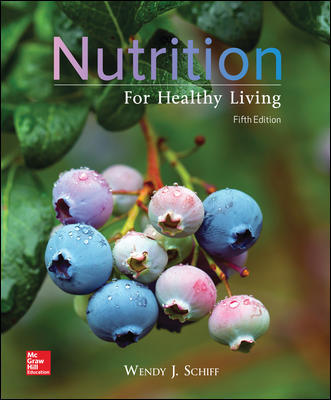

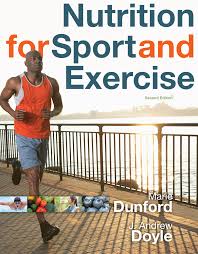



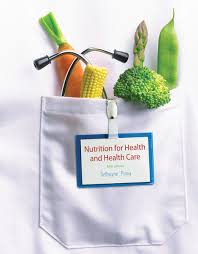
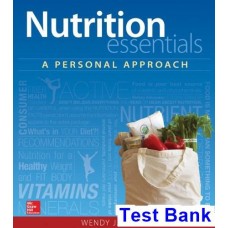



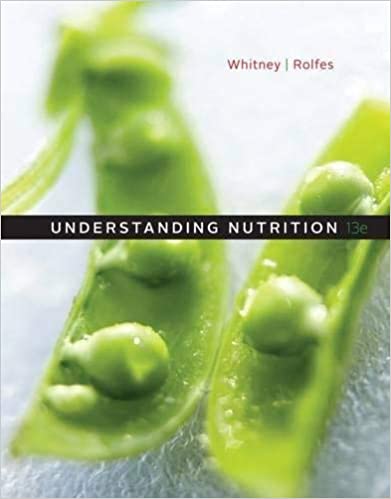
Reviews
There are no reviews yet.